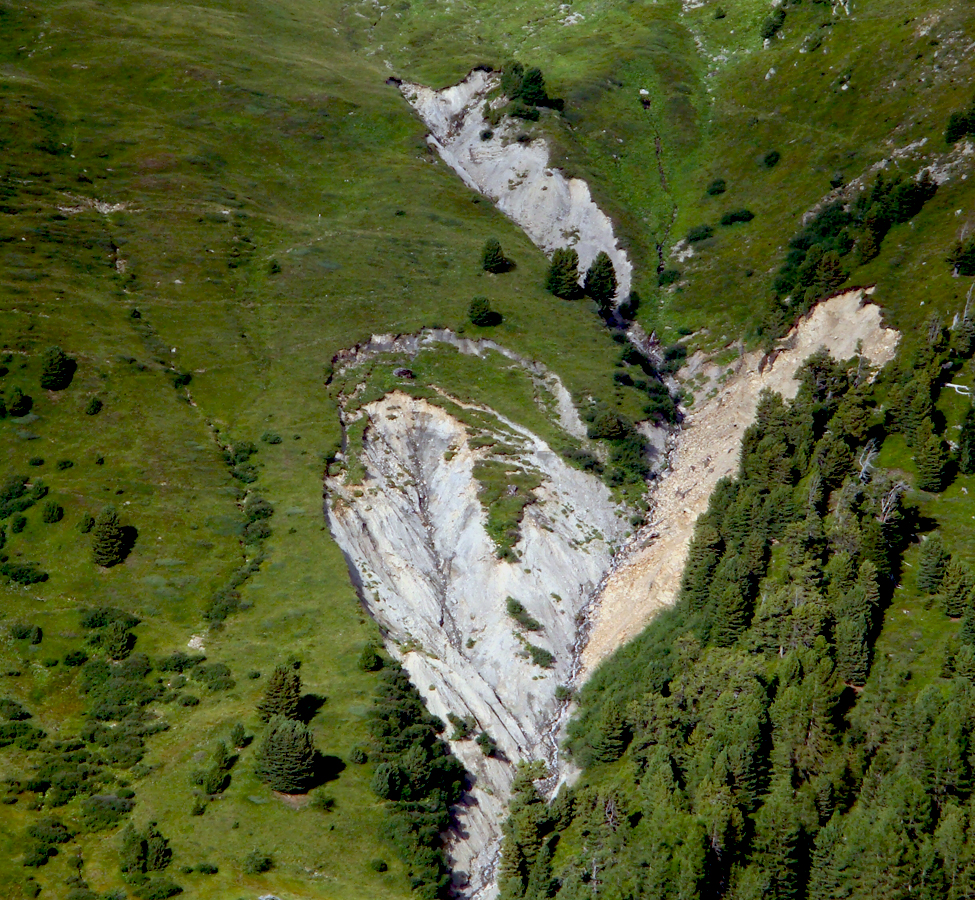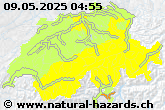What is allowed to happen?
The evaluation and weighing of risks is a social process to distinguish between acceptable and unacceptable risks. A risk that is considered permissible for good reason is an acceptable risk.
Assets or valuables, for which risk must be limited to an acceptable level, are referred to as Protected objects. Following Swiss law and the EU Flood Risk Management Directive, the following three categories of protected objects are important: 1. Persons, 2. Major material assets, 3. Environment (see Figure 3).
- Top priority is given to the protection of persons.
- The major assets of both individuals and the society are protected:
- The protection of individual's assets focuses on buildings. Buildings and their contents are usually valuable material assets. In addition, buildings protect humans against natural hazards and are, therefore, essential for survival.
- The protection of public assets concentrates on the specific interests of society. The major public assets include: infrastructure, elements of major economic importance, basic resources for livelihood, and cultural goods. The loss of these public assets often constitutes serious secondary damage, amongst other wide-ranging consequences. Hence, the aim is to conserve these assets in the long run. Cultural goods are primarily protected for idealistic reasons.
- The environment is protected on its own account.
| Category | Protected object | Protection obligation | What is protected? | ||
| Human beings | Persons | | Protection of human life and health | dei singoli | |
| Major material assets | Buildings | H | Protection of property | ||
| Infrastructure | u | Protection of Swiss economy | The society | ||
| Objects of considerable economic significance or scope | F | Protection of Swiss economy | |||
| Essential natural resources for livelihoods | ü | Protection of natural resources | |||
| Cultural goods | G | Protection of the cultural heritage | |||
| Environment | Nature, environment | P | Protection of nature | The environment |
Table: Protected objects in accordance with the PLANAT recommendation
The recommended security level promoted by PLANAT relates to the direct effect of natural hazards on a protected object. It does not cover technical risks triggered by natural hazards; these are regulated by the Major Accidents Ordinance, where natural hazards are considered one of the possible triggers of such accidents.
Recommended security level
PLANAT recommends that in the long run the following security level be envisaged for the protected objects:
Human beings
The average risk of death for human beings is not significantly increased by natural hazards. The annual risk of being killed as a result of natural hazards is significantly lower than the average probability of death for the age group with the lowest mortality rate in Switzerland.
Major material assets
- Buildings
Buildings have to provide a high level of protection to persons and their movable goods. They have to be resistant and should not pose any threat to persons and other material assets. The residual risks to persons and material assets are acceptable to the risk carriers. - Infrastructure, objects of considerable economic importance or scope, essential natural resources
The risk to infrastructure, economically important assets and essential natural resources for livelihood is so low that the continued existence of the society is guaranteed today and for generations to come. Vital goods and services may only be disrupted simultaneously in large parts of Switzerland for short periods of time. - Cultural goods
Cultural goods are protected from natural hazards to ensure that their cultural value is conserved permanently.
Environment
PLANAT does not formulate any security level for the environment. On the one hand, the object of protection, i.e. “major material assets”, also incorporates the fundamental natural resources for livelihood (e.g. water, soil). On the other hand, the processes that unfold during natural events are part of the natural dynamics of habitats. Hence, natural hazards or events do not pose a problem for nature and may even be desirable.
Other assets exist for which PLANAT does not formulate a security level. This applies to livestock in particular. Livestock has a high priority in Swiss legislation and is treated differently than material assets. Its protection is the responsibility of the owner. PLANAT refrains from designating a security level for livestock, as other regulatory provisions already cover its protection needs (in particular protection of buildings and fundamental natural resources for livelihood).
The recommended level of security must be attained through cooperation between all actors responsible for protection against natural hazards. These include a variety of actors, for example, building developers, building owners, the operators of infrastructure, insurance companies, public authorities and those directly affected by the risks.



